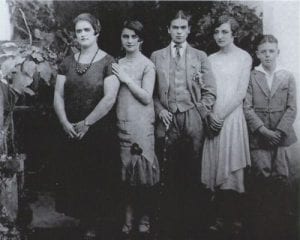In the film Frida, one of the opening scenes of the main character, Frida Kahlo, features her rushing into a formal family photo wearing a men’s suit. It is the first hint, continued throughout the movie, of Kahlo’s real life and recreated queerness. Despite the fact that director Julie Taymor, includes recognition of Kahlo’s bisexuality, it seems to always be a punchline in this film. In one breathtaking scene, Kahlo dances with another woman, the host of a dinner party that she and Diego Rivera both attend. However, due to the repeated panning to Rivera’s face, it seems as though Kahlo is performing, flirting with her future husband while kissing the lips of her female dance partner. This rendition of Kahlo’s sexuality falls flat in the face of documented, complicated and vivid relationships with women that were altogether independent of those she shared with men. The distinction is clear in scenes where Kahlo sleeps with men, where her attention is clearly focused only on her immediate partner, and the camera’s eye is too. This film sadly trivializes her relationships with women, none of the m lasting longer than a single scene, and overlooks the fact that during her lifetime, Kahlo made a point to sleep with almost all of the women that her husband cheated on her with.
Writing About Contemporary Figurative Art
Just another Yale University CampusPress site



I agree that the film doesn’t focus on Frida’s relationships with women enough and was not aware previously that she consistently slept with the women her husband cheated on her with. I wonder why the director chose to focus on her affairs with men such as Trotsky, especially when emphasizing other aspects of her queerness. I’d like to think there’s a reason other than typical Hollywood male bias, though unfortunately, I cannot think of an obvious one.